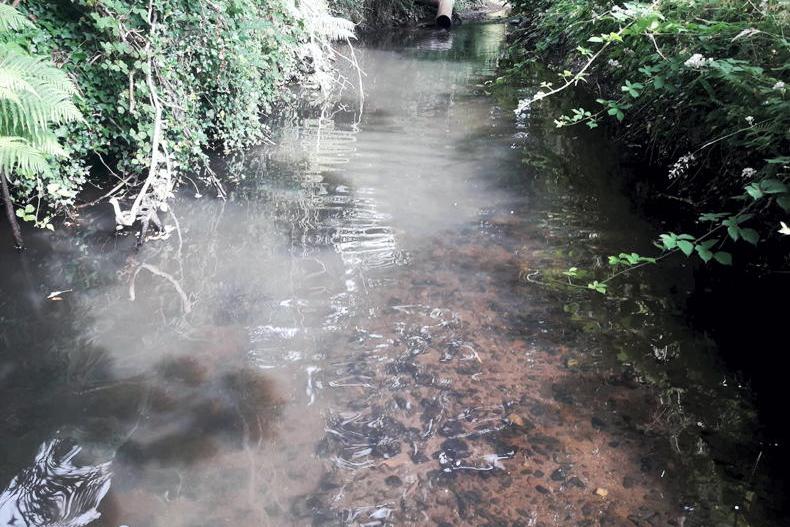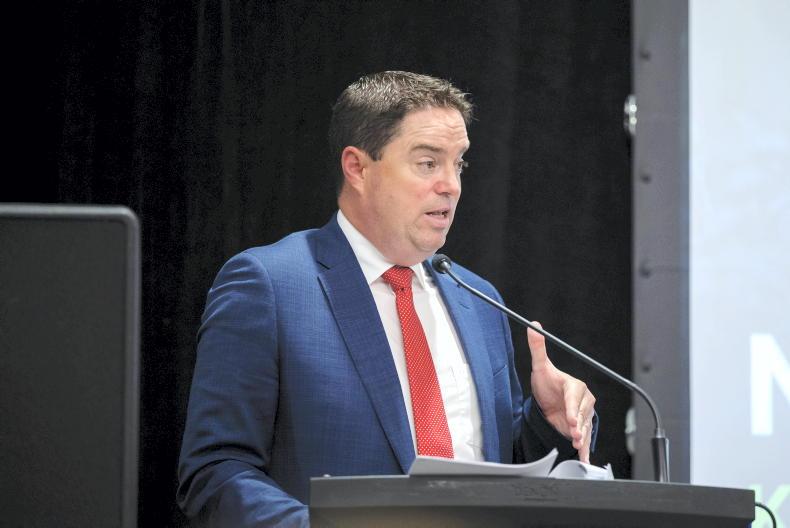The noise died down just a few minutes before 11 o’clock. I had been happy listening to the work going on from my bed.
The rooting sound of the loader stopped and the lights went out on the tractor and dung spreader. A calm settled over the farmyard. The aroma of manure had been wafting over our houses as Smith contractors dug into last year’s dung.
It seeped in through the small windows that were ajar for fresh air, finding my nostrils.Those of us reared on farms take no notice of such smells.
I wondered how Elaine, my daughter-in-law was getting on next door. Manure is a pungent odour if you are experiencing it under the bed covers for the first time. Still, maybe Elaine was completely oblivious to it due to good seals on the doors and windows in their new house.
The Smith team of machinery operators were driven away in the jeep. As the lights faded, the full moon became visibly bright against the black sky. I fell asleep.
We woke the following morning to wet and misty weather. A hawk was sitting on a fencing pole, absolutely still. He remained there for a long time. He seemed to be contemplating the day or simply allowing the slow, misty rain to wash his feathers.
As the clock struck 7.30am, the noise of the loader could be heard in the yard. The contractors were back and the job of ferrying and spreading the dung on an outside local block that will be the winter home for the in-calf heifers was again underway.
We would be lost without the contractors that support us.
They are certainly in demand while farmers change strategies and try to gather and grow fodder for the winter. Their workload is huge at the moment.
Kale for feeding
We’ve decided to put in 13 acres of hybrid kale to feed the in-calf heifers over the winter along with silage bales. We’ve found it a good feeding system in the past.
The bales can be placed along the edges before sowing the crop, making it a quicker job to feed out during winter foddering.
The dung will be ploughed down before the kale is sown. I was listening to an episode of Talking Dairy, a New Zealand podcast on wintering cows in wet conditions recently.
The workload remains heavy with the provision of winter feeding still a critical element on many farms. Farmers have had to graze some or all of what should be the second cut of silage.
One of the main considerations when feeding forage crops is to ensure that a dry lie area for heifers or dry cows is available. Animals get stressed when they don’t have a dry place to lie.
This can be provided by not tilling or planting a three-meter band around the perimeter of the crop. Leaving it in grass ensures the animals have somewhere comfortable to lie. It also acts as a buffer for run off from the field, protecting the environment.
Tough year
Up to now, it has been a difficult farming year, largely because it has been so unpredictable.
One day it’s like winter; cold and miserable. Then the following day dawns sunny and fine. There is no summer heat. We’ve had our evening meal outside twice since the start of summer which sums up the lack of grass growing, balmy evenings.
The workload remains heavy with the provision of winter feeding still a critical element on many farms. Farmers have had to graze some or all of what should be the second cut of silage. They will be looking for that fodder later on. This latest rain should bring on the grass.
Yesterday had a different feel about it. Philip called in the evening saying “I can feel the grass getting ready to grow.” That’s only something a farmer would say.
Up to this point, the grass has lacked leaf, shooting up fibrous stems in a rush to put out seed heads. The result was much reduced feeding value which would have depressed the protein content of milk. Hence, the feeding of ration has been critical for volume and proper nourishment of the cow.
So, the gathering of winter feed is still top of the list of to do jobs. With any bit of luck, we have turned the corner and good weather lies ahead.
Farmers will get jobs done and fodder saved for autumn and winter. If we wait long enough and can keep it together, the change will come and we will manage it all as we’ve done in other difficult years.
Read more
Katherine O'Leahy: babysitting my second grandchild
Katherine O'Leary: building relationships with the teenagers
The noise died down just a few minutes before 11 o’clock. I had been happy listening to the work going on from my bed.
The rooting sound of the loader stopped and the lights went out on the tractor and dung spreader. A calm settled over the farmyard. The aroma of manure had been wafting over our houses as Smith contractors dug into last year’s dung.
It seeped in through the small windows that were ajar for fresh air, finding my nostrils.Those of us reared on farms take no notice of such smells.
I wondered how Elaine, my daughter-in-law was getting on next door. Manure is a pungent odour if you are experiencing it under the bed covers for the first time. Still, maybe Elaine was completely oblivious to it due to good seals on the doors and windows in their new house.
The Smith team of machinery operators were driven away in the jeep. As the lights faded, the full moon became visibly bright against the black sky. I fell asleep.
We woke the following morning to wet and misty weather. A hawk was sitting on a fencing pole, absolutely still. He remained there for a long time. He seemed to be contemplating the day or simply allowing the slow, misty rain to wash his feathers.
As the clock struck 7.30am, the noise of the loader could be heard in the yard. The contractors were back and the job of ferrying and spreading the dung on an outside local block that will be the winter home for the in-calf heifers was again underway.
We would be lost without the contractors that support us.
They are certainly in demand while farmers change strategies and try to gather and grow fodder for the winter. Their workload is huge at the moment.
Kale for feeding
We’ve decided to put in 13 acres of hybrid kale to feed the in-calf heifers over the winter along with silage bales. We’ve found it a good feeding system in the past.
The bales can be placed along the edges before sowing the crop, making it a quicker job to feed out during winter foddering.
The dung will be ploughed down before the kale is sown. I was listening to an episode of Talking Dairy, a New Zealand podcast on wintering cows in wet conditions recently.
The workload remains heavy with the provision of winter feeding still a critical element on many farms. Farmers have had to graze some or all of what should be the second cut of silage.
One of the main considerations when feeding forage crops is to ensure that a dry lie area for heifers or dry cows is available. Animals get stressed when they don’t have a dry place to lie.
This can be provided by not tilling or planting a three-meter band around the perimeter of the crop. Leaving it in grass ensures the animals have somewhere comfortable to lie. It also acts as a buffer for run off from the field, protecting the environment.
Tough year
Up to now, it has been a difficult farming year, largely because it has been so unpredictable.
One day it’s like winter; cold and miserable. Then the following day dawns sunny and fine. There is no summer heat. We’ve had our evening meal outside twice since the start of summer which sums up the lack of grass growing, balmy evenings.
The workload remains heavy with the provision of winter feeding still a critical element on many farms. Farmers have had to graze some or all of what should be the second cut of silage. They will be looking for that fodder later on. This latest rain should bring on the grass.
Yesterday had a different feel about it. Philip called in the evening saying “I can feel the grass getting ready to grow.” That’s only something a farmer would say.
Up to this point, the grass has lacked leaf, shooting up fibrous stems in a rush to put out seed heads. The result was much reduced feeding value which would have depressed the protein content of milk. Hence, the feeding of ration has been critical for volume and proper nourishment of the cow.
So, the gathering of winter feed is still top of the list of to do jobs. With any bit of luck, we have turned the corner and good weather lies ahead.
Farmers will get jobs done and fodder saved for autumn and winter. If we wait long enough and can keep it together, the change will come and we will manage it all as we’ve done in other difficult years.
Read more
Katherine O'Leahy: babysitting my second grandchild
Katherine O'Leary: building relationships with the teenagers










SHARING OPTIONS